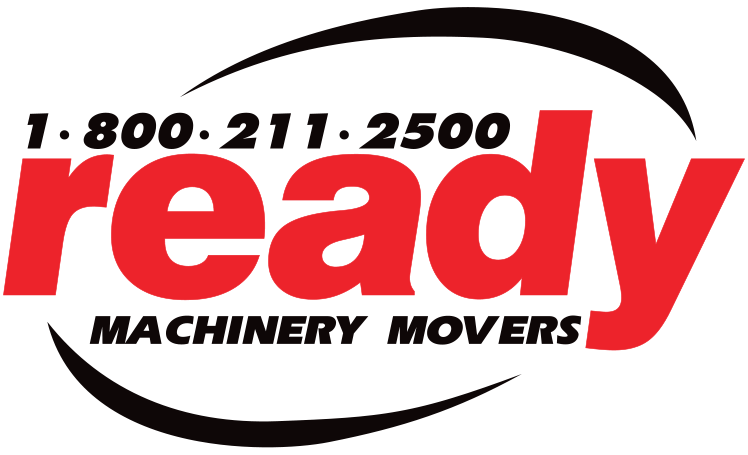Winterizing your heavy equipment before winter hits will help you avoid costly repairs.
Freezing temperatures can lead to serious maintenance issues come spring, and you may have to replace or repair parts to get your machinery functioning again.
Tips for winterizing heavy equipment are similar to those for winterizing your home. Create a checklist to organize your concerns and guide your actions. Here are some tips to help you winterize your machinery and keep it running safely and properly throughout the season.
- Conduct a visual inspection – Before staging and storing your equipment, inspect it first. Check your engine, wiring, and attachments, especially before turning on any components. Ideally, inspection should be a year-round task, but it becomes especially important during winter. In particular, look for wear and tear that could cause breakdowns later.
Take this opportunity to do some preventive maintenance to stay ahead of any repairs. Pay attention to moving parts to ensure they’re lubricated properly. Check the heaters as well, as these are necessary components during the cold. Be sure they’re in working order so that your machinery and vehicles won’t freeze when you need them.
- Clean equipment – Clean your equipment and all its components (all the better if you have a heated area in which to wash it). Wash off dirt and plant debris thoroughly. (Plant debris can hold and draw in moisture, which can cause rust).
Mud and dirt can build up on a vehicle’s exterior and freeze tracks in place. Cleaning equipment also deters pests from using it as shelter. Heated pressure washing can keep snow and ice from accumulating and prevent melting and refreezing after storage.
- Use a block heater – Be careful when starting an engine during winter; cold-starting an engine puts a severe strain on it and can cause damage. Use a block heater to thaw out the engine block and make it easier to start. Before attempting any operations, keep the engine running until it reaches full temperature.
Running the engine cold can damage the exhaust and intake valves, requiring costly repairs. Starter fluid can get your engines running faster, but only inject the fluid when the engine is cranking. Starter fluid is very flammable; store it safely away from the operator’s compartment when not in use, and remove it only when needed to start the machine.
- Change the filters – Operating machinery during summer and fall is likely to create plenty of dust that can clog the air filters. Clogged filters strain the engine and can impact its lifespan, so inspect them before replacement and check for signs of damage. (New ones will usually last a year.) Follow the manufacturer’s recommended replacement for filters. Using the wrong type can restrict fluid flow and let dirt particles pass, resulting in damage to the engine. Purchasing the appropriate filters will save you the trouble of repairing the engine down the road.
- Check the battery – Think of the battery as the heart of the engine. Fuel and oil are needed to make the engine work, but without the battery, it won’t function at all. The battery is the most sensitive component to low temperatures; it becomes less efficient when cold weather hits. Ensure that it is charged in fall and store it in a warm, dry place to avoid draining. Look for any signs of dirt or corrosion that could drain the battery further. If it falls below 75% of its capacity, recharge it immediately. This is especially important when equipment is outdoors, whether during use or when moving industrial machinery. If you store the battery for more than 10 days, unplug the ground cables and check them once a month. Keep batteries upright and refrain from stacking them.
- Inspect the hydraulics – Inspect and replace your hydraulic fluid before winter and maintain fluid levels for efficient flow. One rule of thumb is to check the dipstick to see if the liquid drips; if it does, the tank is sufficiently full. Also look at the hydraulic hoses. In colder temperatures, the coating can flex and cause cracks. Run your machine for as long as it takes to get the hydraulic fluid to 65 degrees Celsius, then continue running it for another hour. If it gets too cold, consider using arctic hydraulic fluid to condition the hoses.
- Test the coolant – To avoid damage, always use a coolant that’s made specifically for your engine and is compatible with OEM recommendations. For inspections, leave the engine running and check the coolant for any bubbles that indicate impurities. The right ratio of coolant to water will keep your engine running smoothly. Normally, a 50:50 ratio is enough to keep the engine working, but if it gets especially cold, you might have to change it to 70:30. Before winter, check that the radiator tank is filled to the top and inspect the cap for proper pressure.
- Inflate the tires – Tires can survive being left out during winter, but the cold can affect their air pressure. Air pressure decreases in low temperatures, so inspect the tires every day. Keeping your tires inflated is an important safety measure and will extend their life. When refilling the tires, use dry nitrogen to prevent ice crystals from forming. These ice crystals can damage the air valve and lead to further deflation.
Refill tires in a heated area to let the air bleed out adequately. Check for any dirt between the tread blocks and clean them as well. Keep an eye out for any signs of cracking that can cause more air pressure loss. Finally, during storage, remove the counterweights to reduce stress on the tires and extend their lifespan.

- Fill the tank after every shift – Always top off the fuel tank at the end of the day. Otherwise, moisture can build up inside the tank and fuel lines and clog the filters. To keep your fuel from freezing, first drain the water separator to remove any water and debris. Most equipment uses No. 2 diesel fuel year-round. However, this fuel can solidify during winter. Switch to No.1 diesel fuel to prevent freezing in the tank and fuel lines.
Proper maintenance of your machinery is a yearlong task, but the job is especially important in cold weather. The right preparations can extend the lifespan of your heavy equipment and make it far more cost-effective. Use these tips to prepare for winter and avoid costly repairs in spring.
Ready Machinery & Equipment provides you with an experienced, highly trained team who can help with all your industrial equipment moving and storage needs across the globe. Our warehouse stretches over four acres with plenty of room for receiving, storage, and staging. We also provide export packaging and overseas shipping to serve customers all over the world. To request a quote, call us at 1-800-211-2500.
